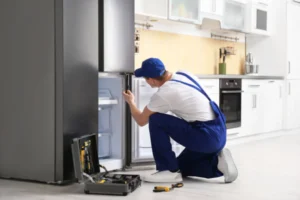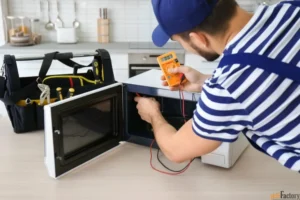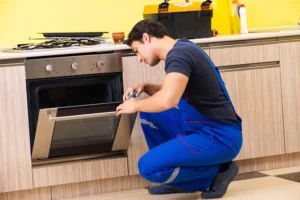Expert Refrigerator Repair Service: Comprehensive Guide
Refrigerators are essential appliances that ensure food preservation and convenience in our daily lives. However, like any machine, they require maintenance and occasional repairs. In this guide, we’ll explore everything you need to know about refrigerator repair services, from identifying common issues to step-by-step solutions, and answers to frequently asked questions.
Why Regular Maintenance is Essential
A well-maintained refrigerator ensures optimal performance, energy efficiency, and extended lifespan. Ignoring minor issues can lead to significant breakdowns and higher repair costs.
Key Benefits of Regular Maintenance:
- Energy Efficiency: Reduces electricity consumption.
- Cost Savings: Prevents expensive repairs.
- Food Safety: Keeps food fresh for longer.
Common Refrigerator Problems
- Refrigerator Not Cooling:
- Likely issues: Faulty thermostat, clogged vents, or dirty condenser coils.
- Unusual Noises:
- Causes: Loose fan blades, motor issues, or worn-out parts.
- Water Leakage:
- Reasons: Clogged drain tubes or damaged door gaskets.
- Excessive Frost Build-up:
- Potential issues: Faulty defrost system or broken door seals.

Step-by-Step Guide to Refrigerator Repair
Step 1: Diagnose the Problem
- Inspect: Check for visible damage or unusual sounds.
- Observe: Note irregularities like cooling failure or water leaks.
- Test: Use a multimeter to assess electrical components.
Step 2: Gather Necessary Tools
- Screwdrivers (Phillips and flathead)
- Multimeter
- Replacement parts (as needed)
- Vacuum cleaner or brush
Step 3: Safety First
- Unplug the refrigerator before starting any repairs.
- Wear protective gloves to avoid injuries.
Step 4: Address Specific Issues
Problem 1: Refrigerator Not Cooling
Clean the Condenser Coils:
- Unplug the fridge.
- Use a brush or vacuum to remove dust and debris.
Check the Thermostat:
- Locate and test the thermostat using a multimeter.
- Replace it if faulty.
Problem 2: Water Leakage
Inspect Drain Tubes:
- Clean clogged tubes using warm water and a wire brush.
Replace Damaged Gaskets:
- Remove the old gasket carefully.
- Install the new gasket, ensuring a tight seal.
Problem 3: Excessive Frost Build-Up
- Test the Defrost Timer:
- Use a multimeter to check the timer’s continuity.
- Replace it if necessary.
- Seal Door Gaps:
- Adjust or replace the door seal to prevent warm air entry.
Maintenance Tips to Avoid Repairs
- Clean Coils Every 6 Months: Prevent dust build-up.
- Check Door Seals: Ensure airtight closure.
- Maintain Proper Temperature: Set between 35°F-38°F (1.7°C-3.3°C).

FAQs on Refrigerator Repair
1. How often should I service my refrigerator?
Regular maintenance should be performed every 6-12 months to ensure optimal performance.
2. Is DIY repair safe?
Minor repairs like cleaning coils are safe for DIY. However, complex electrical or mechanical issues should be handled by professionals.
3. What is the average cost of refrigerator repair?
Repair costs vary based on the issue, ranging from $50 to $400.
Related Search Queries (FAQs from SERP Analysis)
- How to fix a refrigerator that won’t cool?
- Common refrigerator problems and solutions.
- How to clean refrigerator coils safely?
Refrigerator repair Service doesn’t have to be intimidating. By understanding common issues, following simple maintenance tips, and knowing when to call a professional, you can ensure your appliance serves you reliably for years.
If you need expert help, contact our Refrigerator Repair Service for fast and reliable assistance.







